When my son first expressed an interest in the wild world of STEM after school, my mind raced to elaborate science kits and intricate projects. But, oh boy, was I overthinking it! I quickly realized there was a universe of simple, hands-on preschool STEM activities perfect for his preschooler energy.
If you’ve ever felt that pinch of desperation trying to find the right activities for your little scientist, you’re not alone. So, take a deep breath, because I’ve got your back!
Here are my top 15 favorite (and oh-so-easy) fun STEM activities that your preschooler will absolutely adore.
What Is STEM For Preschoolers?
STEM, an acronym for Science, Technology, Engineering, and Math, is a holistic approach to education that integrates these disciplines into one dynamic learning experience. Especially for preschoolers, diving into STEM projects can foster an innate sense of curiosity, laying the foundation for lifelong learning.
Here are a few ways preschoolers benefit from engaging in easy preschool STEM activities after school or on the weekends:
- Develop problem-solving skills: Tackling challenges head-on in a fun way.
- Nurture creativity: Imagining and creating without limits.
- Enhance critical thinking: Analyzing situations and making connections.
- Build teamwork: Collaborating and valuing different perspectives.
- Cultivate resilience: Embracing failures as part of the learning journey.
How I Chose These Simple STEM Activities For Preschoolers
Navigating through a myriad of STEM sites, I embarked on a mission with my son, testing various hands-on activities to ensure that STEM education is fun for kids of all ages to keep their attention (who likes learning boring lessons??).
I already showcase my favorite STEAM activities for kids with an easy filtering system, but I wanted to pick out the best ones for busy moms and dads just like you.
My top 15 were handpicked for their simplicity in setup, their knack for holding his attention for a solid 30 minutes, and their embrace of multiple STEAM dimensions. Above all, each activity had to pass the ultimate test – it needed to light up his eyes with pure joy!
15 STEM Activities Your Preschooler Will Love
Diving into the vibrant world of STEM can be a delightful adventure for little minds! My handpicked list of 15 fun preschool STEM activities is tailored just for younger kids and even older kids, blending fun with foundational learning.
These engaging endeavors promise to spark curiosity, fuel imagination, and make learning feel like playtime every time.
1. Balloon Rocket
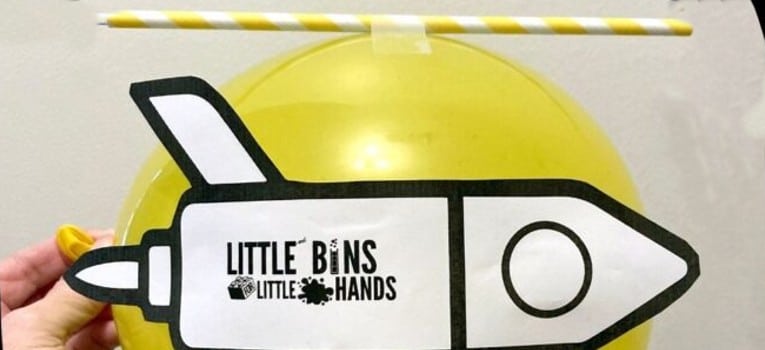
Explore the exciting world of physics and propulsion with the Balloon Rocket experiment! This engaging hands-on activity from Little Bins for Little Hands demonstrates the principles of action and reaction using simple materials.
Kids will have a blast as they create their own mini rocket using a balloon and a straw and then watch it zoom across a string track. It’s a fun and educational way to introduce young minds to basic science experiments and engineering concepts.
- Materials Needed: Balloons, string, drinking straws, tape, scissors.
- Time Required: Approximately 20-30 minutes.
- Ideal Age: Suitable for children aged 3 and above.
- STEM Lessons: Preschoolers explore propulsion, learn basic engineering, and understand cause-and-effect through hands-on experimentation.
https://littlebinsforlittlehands.com/balloon-rocket/
2. Cup Tower Challenge
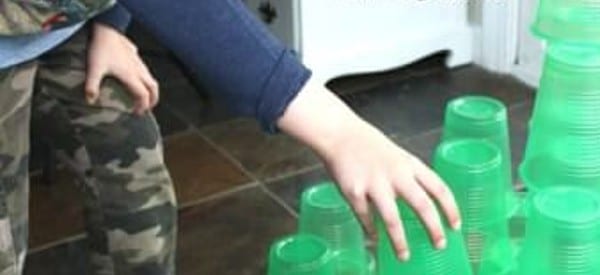
Engage young minds with the Cup Tower Challenge! This hands-on activity from Little Bins for Little Hands encourages creative thinking and fine motor skills as children construct towering structures using plastic cups.
Unleash imagination and problem-solving as kids experiment with different configurations, fostering teamwork and spatial awareness in a fun-filled manner.
- Materials Needed: Plastic cups, timer or watch, open space for building.
- Activity Time: Approximately 30-45 minutes.
- Ideal Age: 3-8 years old
- STEM Lessons: Young learners will learn about balance, stability, spatial concepts, and symmetry as they build their own cup structure.
https://littlebinsforlittlehands.com/cup-tower-challenge/
3. Water Cycle In A Bag
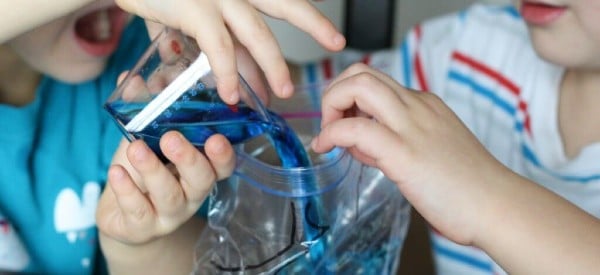
Explore the wonders of the water cycle with the engaging activity, Water Cycle In A Bag. Using simple materials, children witness firsthand how water evaporates, condenses, and precipitates, mimicking the natural process in a sealed bag. This hands-on preschool science experiment sparks curiosity about the science behind weather patterns and water transformation.
- Materials Needed: Clear plastic zipper-lock bags, permanent marker, water, blue food coloring, tape, sunlight.
- Activity Time: Approximately 20-30 minutes.
- Ideal Age: Best suited for children aged 4-8.
- STEM Lessons: Preschoolers explore the water cycle, observing changes with simple tools, crafting a mini-environment, and artistically personalizing their cycle bags with vibrant markers.
http://www.playdoughtoplato.com/water-cycle-bag/
4. Go On A Shape Hunt
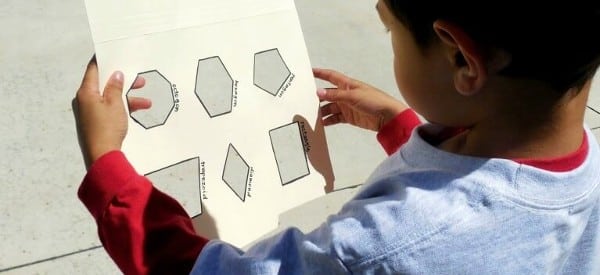
Embark on a captivating “Go On A Shape Hunt” adventure with this interactive activity from Playdough to Plato. Children explore their surroundings to find hidden shapes, turning learning into a fun game.
This engaging experience nurtures shape recognition skills while promoting outdoor exploration and critical thinking.
- Materials Needed: Shape templates (provided on the website or create your own), clipboard or hard surface for holding templates, pencils or markers for marking shapes found, outdoor space or indoor area with various objects.
- Activity Time: Approximately 30-45 minutes.
- Ideal Age: Preschoolers and early elementary school children (ages 3-7)
- STEM Lessons: Preschoolers will explore their environment in the Shape Hunt activity, classifying shapes, utilizing tools, thinking critically, recognizing artistic patterns, and boosting spatial awareness.
https://www.playdoughtoplato.com/shape-hunt/
5. Make A Volcano With Baking Soda
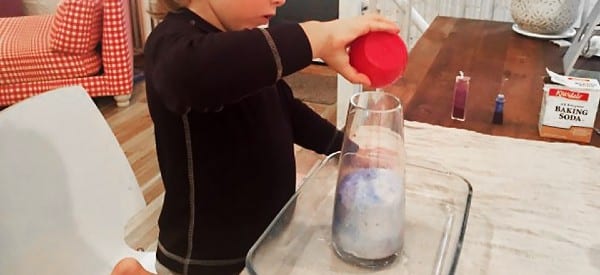
Engage your young scientists in a captivating hands-on experience with the “Make A Glitter Volcano Eruption” activity. Follow simple steps to create a visually stunning volcanic eruption using baking soda and household items. Watch as the volcano comes to life with a sparkling explosion, combining preschool science and creativity in one exciting project.
- Materials Needed: Baking soda, vinegar, dish soap, food coloring (optional), glitter, playdough or modeling clay, tray or plastic container.
- Activity Time: Approximately 20-30 minutes.
- Ideal Age: Children aged 4-10 years old
- STEM Lessons: Through the Baking Soda Volcano activity, preschoolers grasp chemical reactions, utilize household tech, engineer structures, artistically embellish, and apply math skills.
https://mommypoppins.com/kids/stem/make-a-glitter-volcano-eruption
6. Magnetic Counting Strips
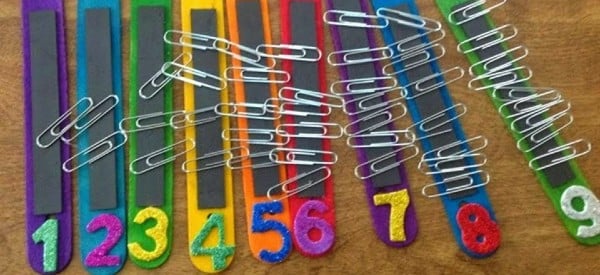
Engage young minds with the Magnetic Counting Strips activity! Visit the blog “The Elementary Math Maniac” to discover a quick and enjoyable math practice for little learners. Using magnetic strips and playful manipulatives, children can explore numbers, practice counting, and develop early math skills with this fun math activity. The activity fosters a strong foundation in mathematics while keeping children excited about learning.
- Materials Needed: Magnetic strips, small magnetic counters or other manipulatives, whiteboard or magnetic surface, marker or chalk.
- Activity Time: Approximately 15-20 minutes.
- Ideal Age: Preschool and kindergarten (3-6 years old)
- STEM Lessons: Preschoolers master counting, explore scientific principles, build sequential patterns, and unleash artistic creativity with manipulative designs.
https://theelementarymathmaniac.blogspot.com/2014/07/quick-and-fun-math-practice-for-little.html
7. Counting Cards
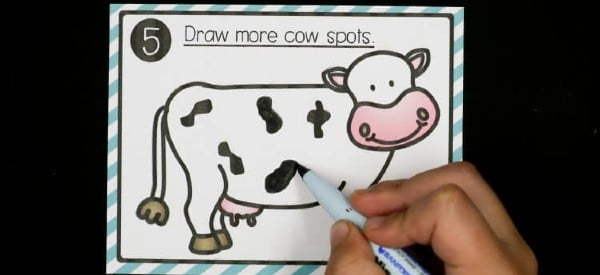
Engage young minds with the Counting Cards activity from The STEM Laboratory. This hands-on learning experience combines math and fine motor skills as children use write-and-wipe cards to practice counting. The interactive nature of the activity makes learning numbers enjoyable and effective.
- Materials Needed: Write-and-wipe counting cards, dry erase markers.
- Activity Time: Approximately 15-20 minutes.
- Ideal Age: Preschoolers and early elementary students (ages 3-6).
- STEM Lessons: Children learn enhance counting, boost hand-eye coordination, develop logical thinking, and enjoy interactive, engaging learning.
https://thestemlaboratory.com/write-wipe-counting-cards/
8. Engineer A Shelter
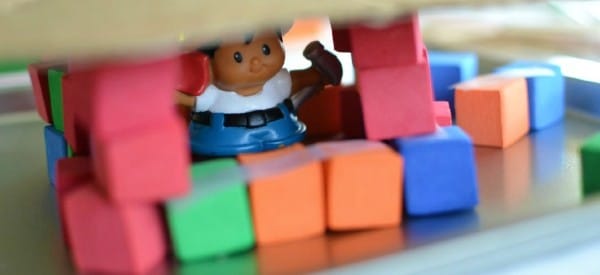
Engineer A Shelter” is an exciting STEM preschool activity that sparks creativity and problem-solving skills. Kids design and construct their own shelters using everyday materials, promoting hands-on learning and imaginative play. With a focus on engineering and collaboration, this activity encourages children to explore architectural concepts while having fun.
- Materials Needed: Cardboard, craft sticks, tape, scissors, markers, assorted craft supplies.
- Activity Time: Approximately 30-45 minutes.
- Ideal Age: Preschoolers and early elementary children (3-6 years old).
- STEM Lessons: Dive into physics, design basics, architectural concepts, artistic expression, and foundational math, building both imagination and practical skills.
https://innovationkidslab.com/engineering-stem-preschool-activities/
9. Dinosaur Graphing Game
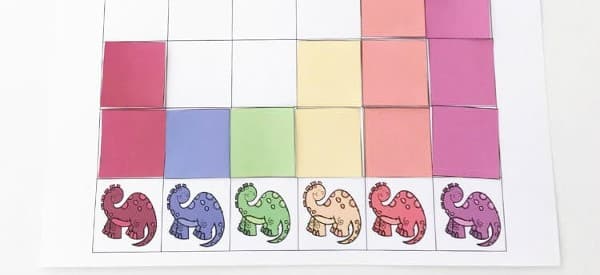
Embark on a prehistoric math adventure with the “Dinosaur Graphing Game.” Children explore the world of graphs and data visualization through this interactive and exciting game. By counting and graphing colorful dinosaurs, kids develop foundational math skills while immersing themselves in the fascinating realm of these ancient creatures.
- Materials Needed: Dinosaur images (printable or toy figurines), graph paper, dice.
- Activity Time: Approximately 20-30 minutes.
- Ideal Age: Preschool to early elementary (4-8 years old).
- STEM Lessons: Preschoolers grasp foundational graphing skills, delve into dinosaur species, use tangible tech tools, and artistically express through coloring, blending math and creativity.
https://thestemlaboratory.com/dinosaur-math-graphing/
10. Fizzling Rainbows
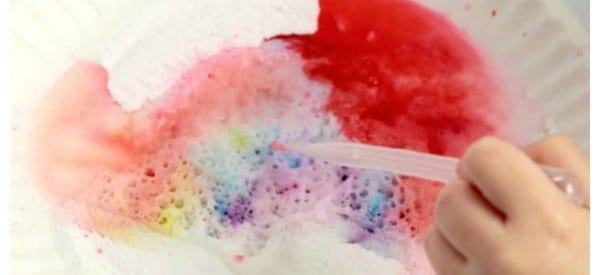
Unleash the wonder of science with the “Fizzling Rainbow” activity. This captivating STEM experience introduces younger kids to the magic of chemical reactions through colorful, fizzing eruptions. As they watch the vibrant rainbow colors mix and bubble, young minds are immersed in a world of sensory exploration, fostering curiosity and basic scientific concepts in a safe and playful environment.
- Materials Needed: Baking soda, vinegar, food coloring, ice cube tray or muffin tin.
- Activity Time: Approximately 15-20 minutes.
- Ideal Age: Toddlers (2-4 years old)
- STEM Lessons: This activity introduces toddlers and preschoolers to basic chemical reactions through the fizzing reaction between baking soda and vinegar. They also explore color mixing and observe cause-and-effect relationships as they witness the bubbling rainbow.
https://www.steamsational.com/stem-activities-for-toddlers-fizzing-rainbows/
11. Go On A STEM Hike
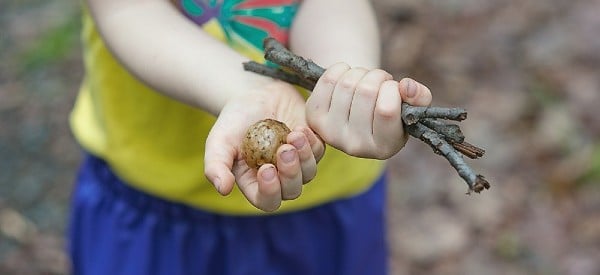
Embark on a thrilling educational adventure with the “Go On A STEM Hike” activity. Combine the wonders of nature with STEM learning as children explore the outdoors, engaging in hands-on scientific observations and interactive experiences. This activity instills a love for nature while nurturing their curiosity about the world around them through engaging, experiential learning.
- Materials Needed: Nature trail, field guides, notepads, pencils, magnifying glasses.
- Activity Time: 1-2 hours.
- Ideal Age: Elementary and middle school (7-12 years old).
- STEM Lessons: Preschoolers explore ecology, utilize technology tools, navigate natural challenges, and apply math through distance measurement and species counting.
https://outdoorfamiliesonline.com/taking-stem-learning-for-a-hike/
12. Make The Worms Dance
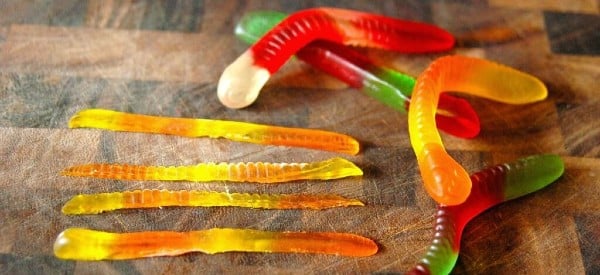
Get ready for a wiggly adventure with the “Dancing Worms” easy science activity. This captivating experiment turns ordinary gummy worms into lively dancers by exploring chemical reactions and acidity levels. It’s a fun and educational way to introduce kids to basic science concepts while sparking their curiosity about the world around them.
- Materials Needed: Gummy worms, baking soda, vinegar, a plate or shallow container.
- Activity Time: Approximately 15-20 minutes.
- Ideal Age: Elementary school children (6-10 years old).
- STEM Lessons: Preschoolers explore chemical reactions, utilize simple tools, ignite problem-solving curiosity, and hone basic measurement skills.
https://www.playdoughtoplato.com/kids-science-dancing-frankenworms/
13. Fizzy Painting
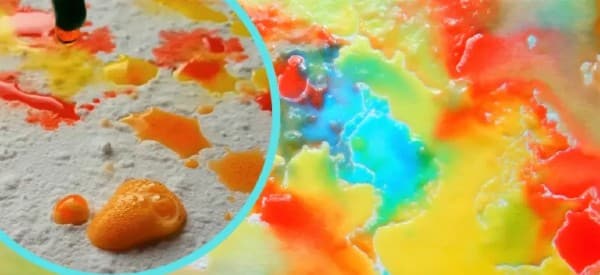
Discover the exciting world of art and chemistry with the “Fizzy Painting” STEM activity. Kids combine science and creativity by using a colorful concoction of baking soda, vinegar, and paint to create vibrant and effervescent masterpieces. This hands-on experience stimulates their curiosity, teaches chemical reactions, and adds a new dimension to artistic expression.
- Materials Needed: Baking soda, vinegar, washable paint, paper, containers, droppers, brushes.
- Activity Time: Approximately 30 minutes.
- Ideal Age: Preschool and early elementary (4-8 years old).
- STEM Lessons: Preschoolers explore chemical reactions, artistic creativity, basic tool manipulation, and foundational math concepts through engaging, hands-on fun.
https://taminglittlemonsters.com/fizzy-painting-stem-activity-for-kids/
14. Fireworks In A Jar
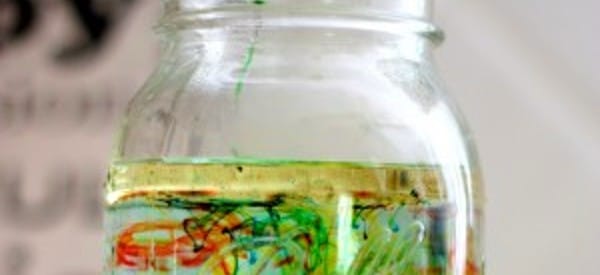
“Fireworks In A Jar” is an easy science activity that combines vibrant colors and simple chemistry to amaze young learners. Through this visually stunning science experiment, children witness the interaction of oil, water, and food coloring, creating a mesmerizing display resembling fireworks. This hands-on experience sparks curiosity and introduces basic scientific principles in an engaging and delightful way.
- Materials Needed: Clear jar or container, water, oil, food coloring, dropper, or pipette.
- Activity Time: Approximately 15-20 minutes.
- Ideal Age: Preschool and early elementary (4-8 years old).
- STEM Lessons: Preschoolers explore oil-water density differences, color blending, basic lab techniques using droppers, and concepts of measurements and patterns.
https://www.icanteachmychild.com/fireworks-in-a-jar/
15. Walking Water
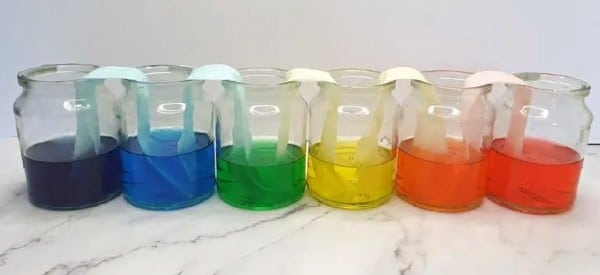
Experience the wonder of color-mixing and capillary action with the captivating “Walking Water” STEM activity. This hands-on science experiment introduces kids to concepts of absorption, color theory, and fluid dynamics while fostering curiosity and critical thinking. Watch as water magically travels between cups, creating vibrant gradients that mesmerize and educate.
- Materials Needed: Clear glasses, water, food coloring, paper towels.
- Activity Time: Approximately 1-2 hours (including observation time).
- Ideal Age: Preschool to elementary school children (4-10 years old).
- STEM Lessons: Preschoolers explore capillary action, learn basic scientific techniques, apply foundational engineering concepts, and discover color theory, blending science, art, and math seamlessly.
https://taminglittlemonsters.com/walking-water-stem-activity-for-kids/
Help Your Little Ones Grow With STEM Today!
Navigating the early years of motherhood and education is quite the adventure, isn’t it? It’s our heart’s desire to make learning a joy for our kiddos. These easy STEM activities for preschoolers have been a game-changer in our home, blending giggles with discoveries. Here’s to empowering our little ones to dream big, explore fearlessly, and embrace the magical world of STEM with open arms and wide-eyed wonder. Happy learning!







0 Comments